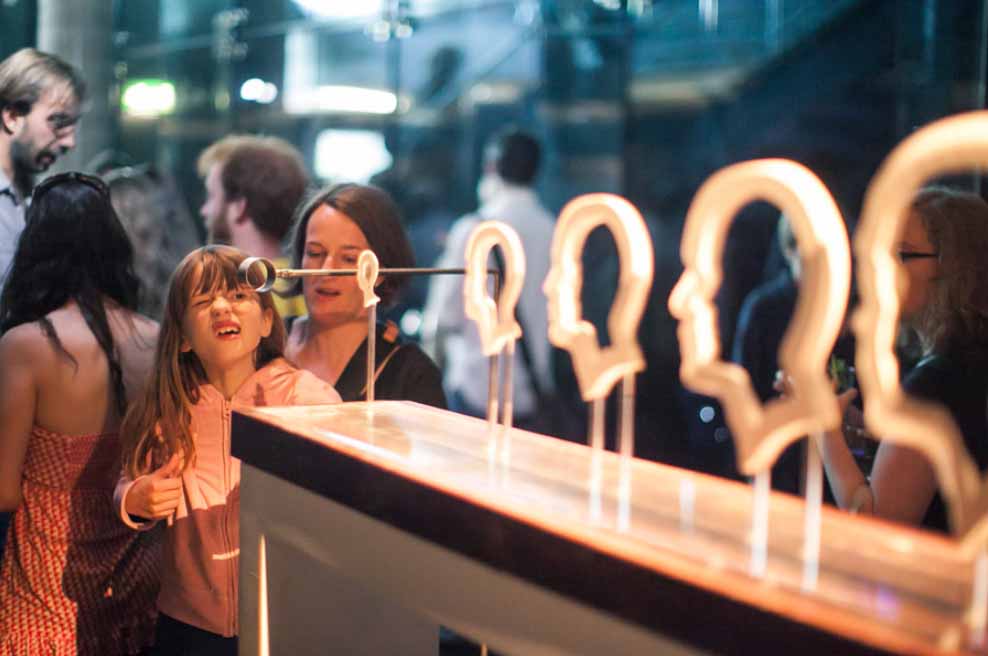Savoy Cat
2014-2015 | White Bronze and Chrome | 96 cm (w) x 60 cm (d) x 40 cm (h)
To avoid a repeat performance, the Savoy offered a member of staff to join tables of thirteen thereafter. Unable to discuss private matters or feel at ease, this proved to be unpopular with guests and thus, in a stroke of genius, Kaspar was born: a two foot high sculpture of a black cat was created in 1927 by British designer Basil Ionides to stave off bad luck.
For almost 90 years The Savoy has been more than happy to oblige parties of thirteen with Kaspar's company, whereby he joins in with napkin around his neck and a full place setting to 'enjoy' every course. Winston Churchill, who adored Kaspar, insisted that the cat join him at every gathering of The Other Club.
A huge thank yo to: Kiaran McDonald, Janine Collins, Sally Perry, Graham Walker.
One of my great heroes, Arthur C. Clarke once said "Any sufficiently advanced technology is indistinguishable from magic".
Kaspar The 14th Guest is a commissioned sculpture for Kaspar's Restaurant at The Savoy Hotel London where I spent several months as Artist in Residence.
In 1898 South African diamond magnate Woolf Joel held a dinner at The Savoy for fourteen guests and one cancelled at the last minute. The dinner continued, but one superstitious guest announced that death would come to the first person to leave the unlucky table of thirteen. Joel took that gamble and a few weeks later he was shot dead in Johannesburg.
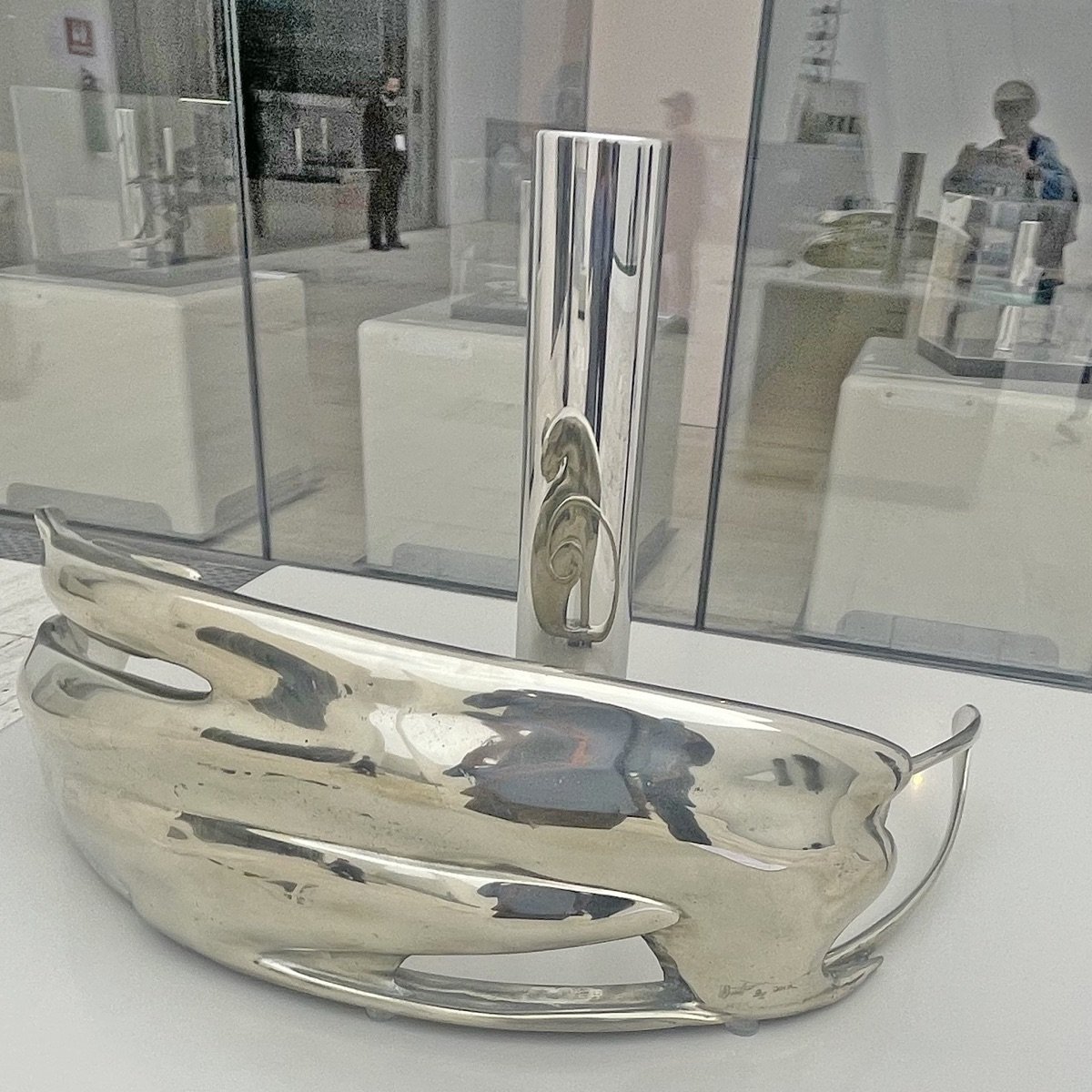
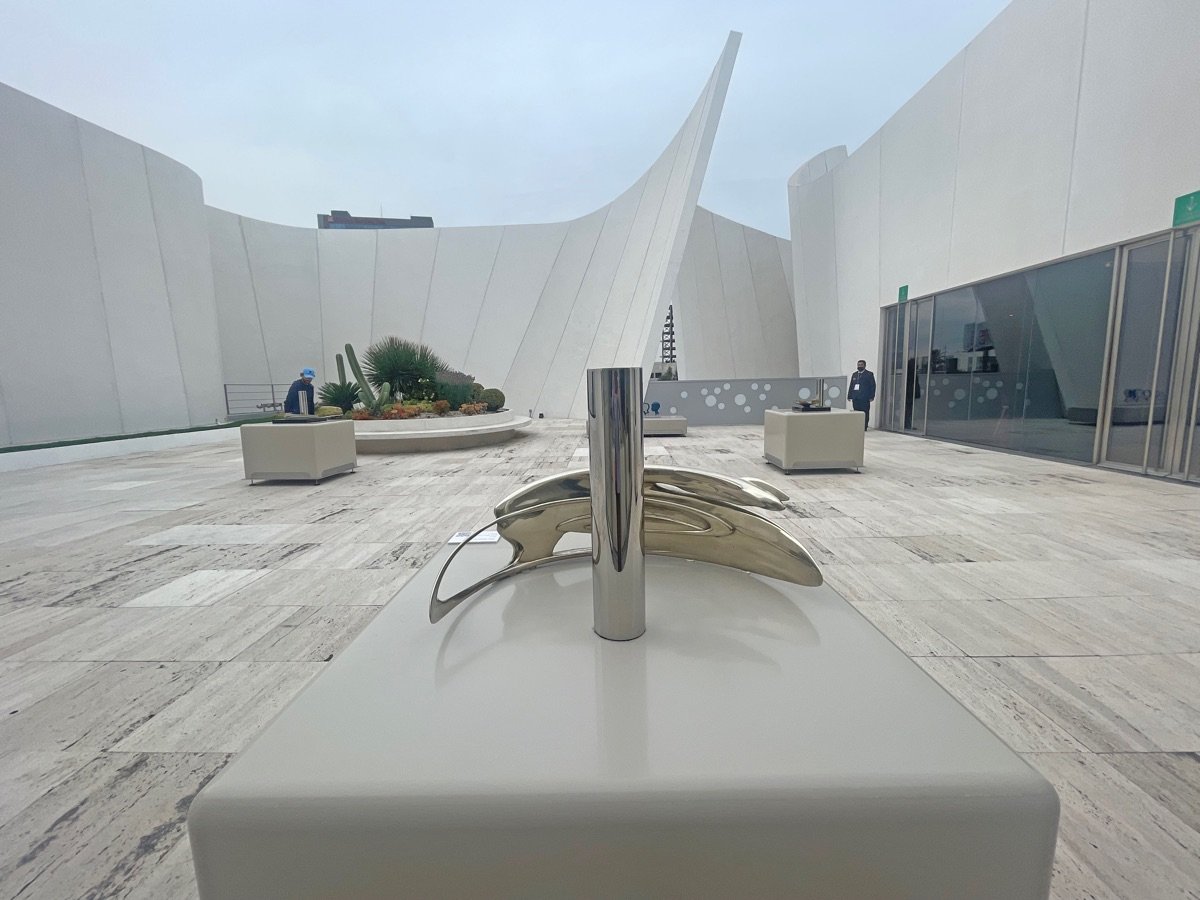
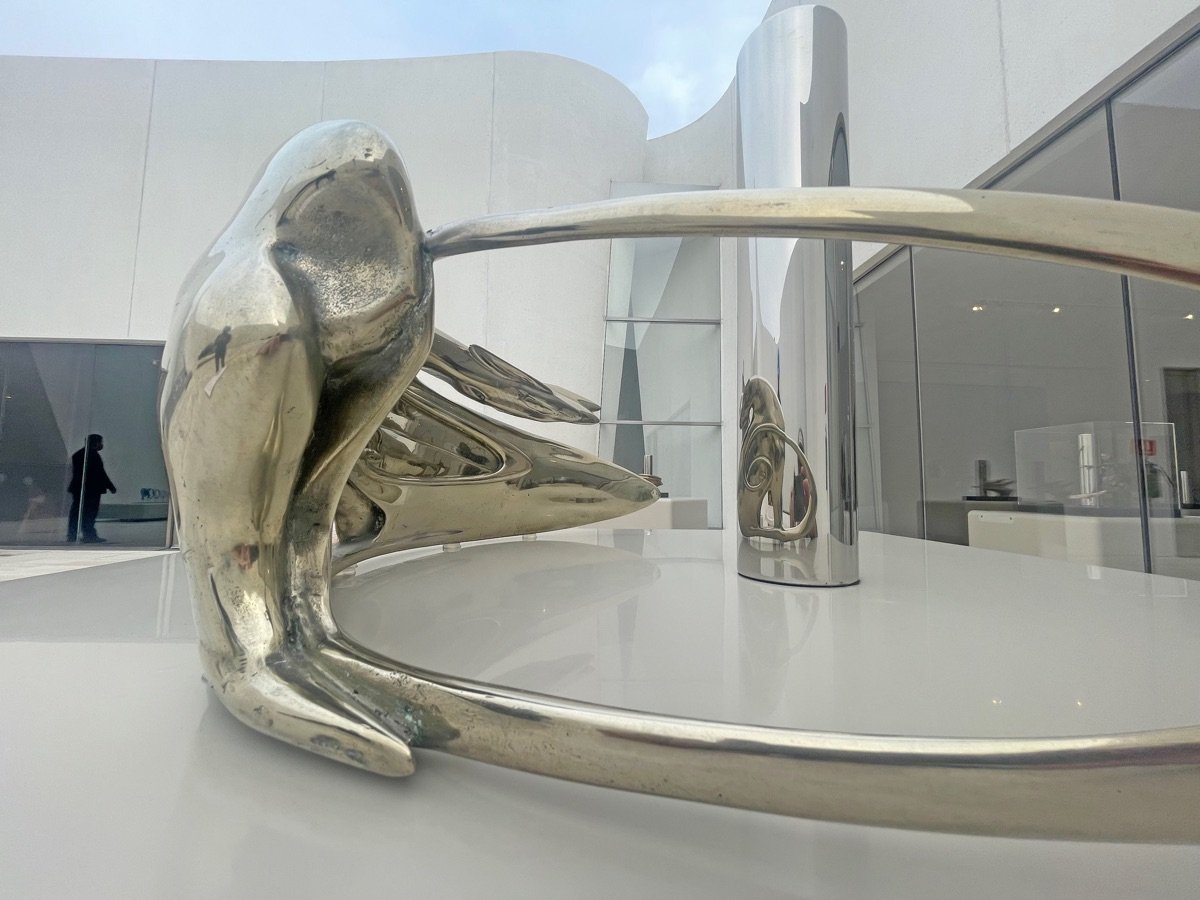
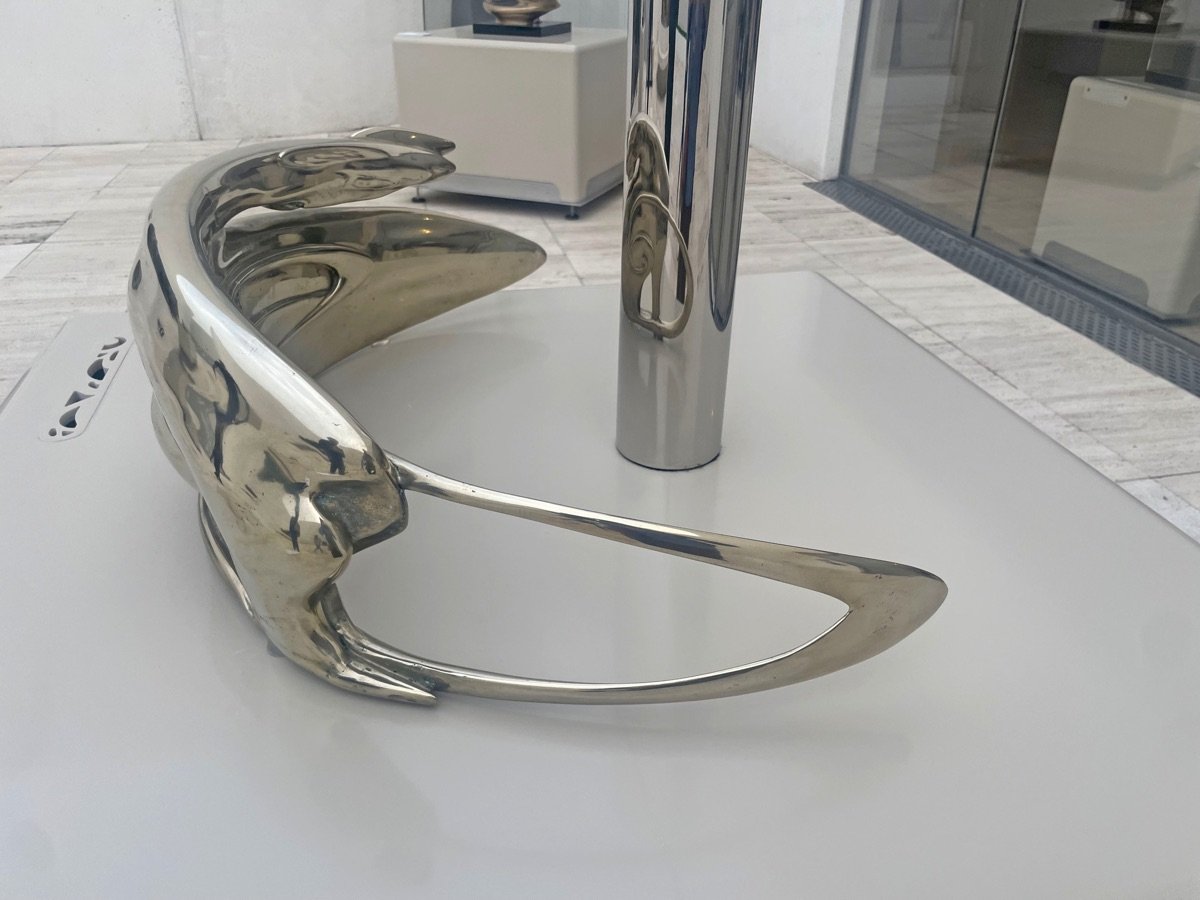
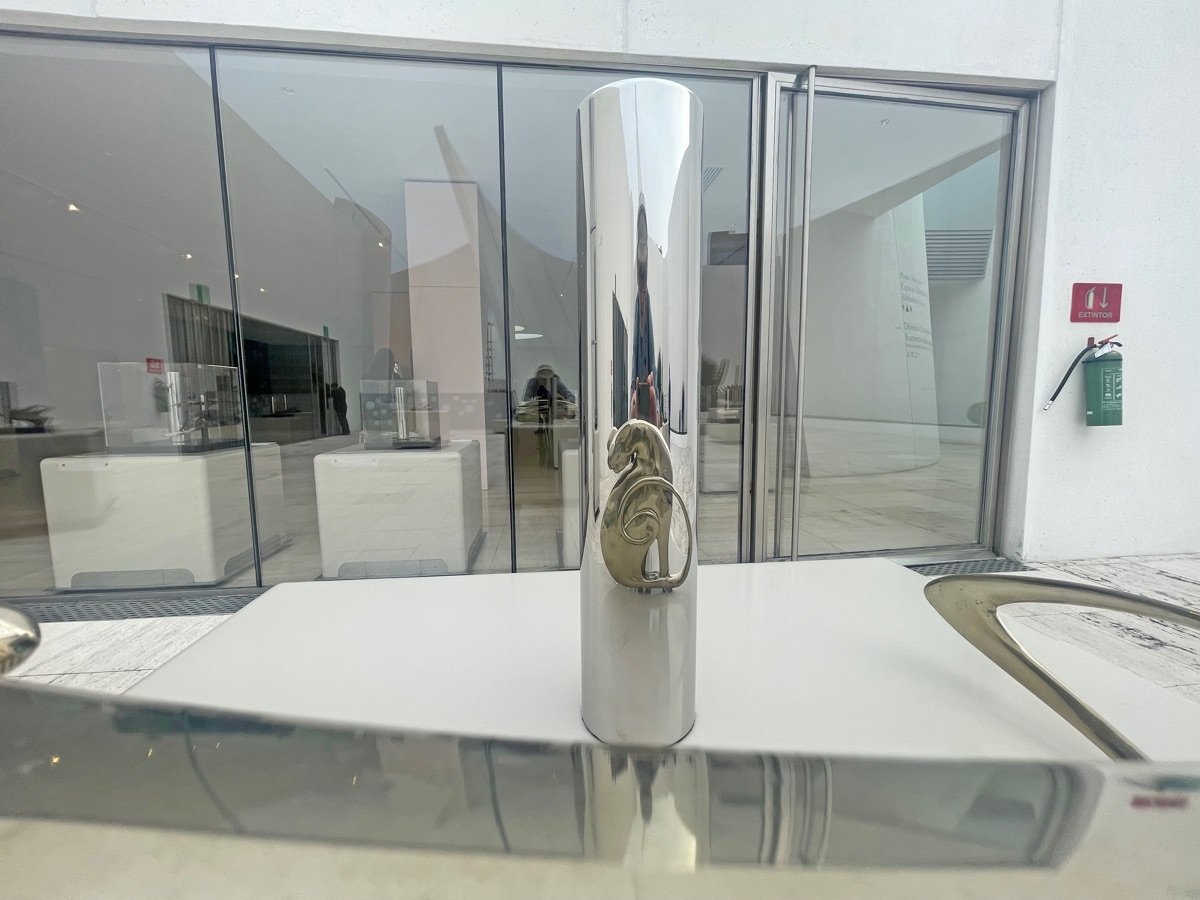
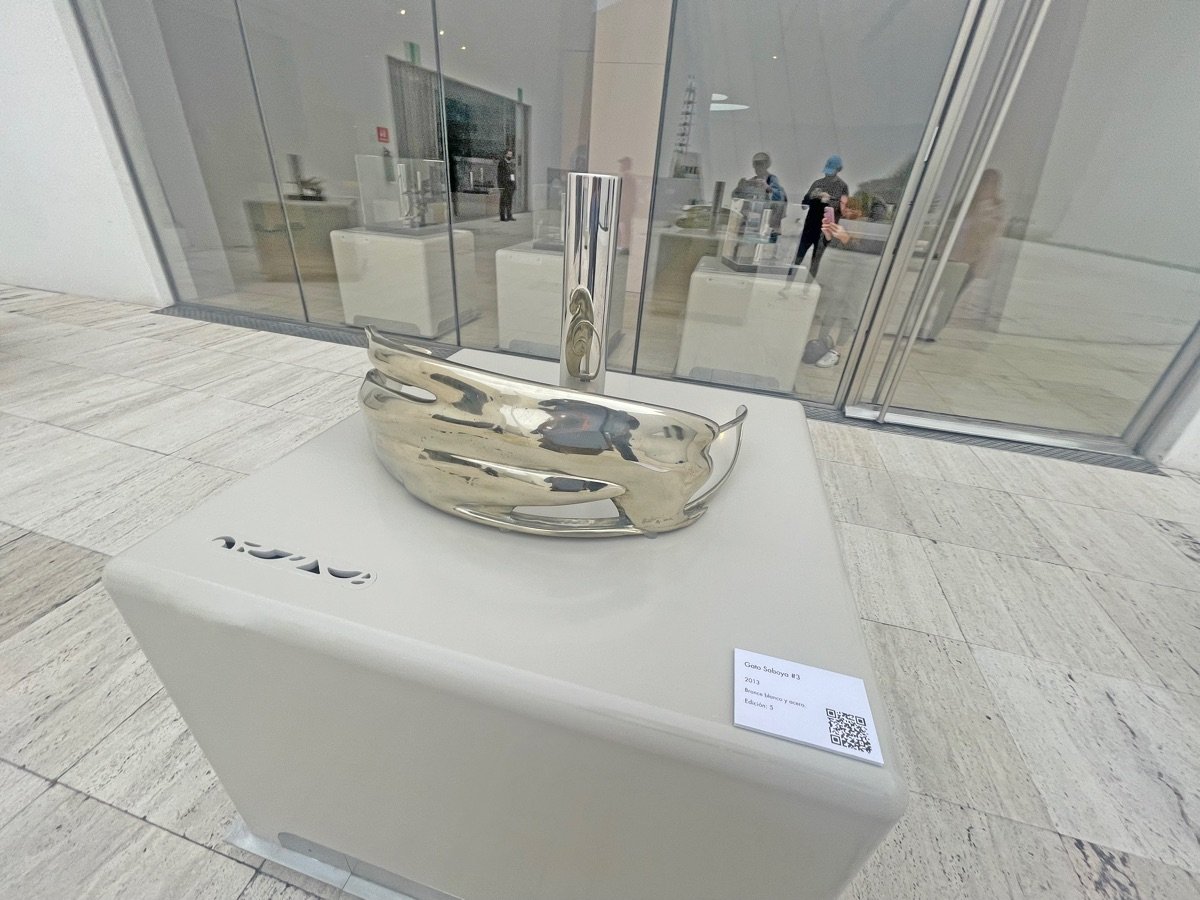
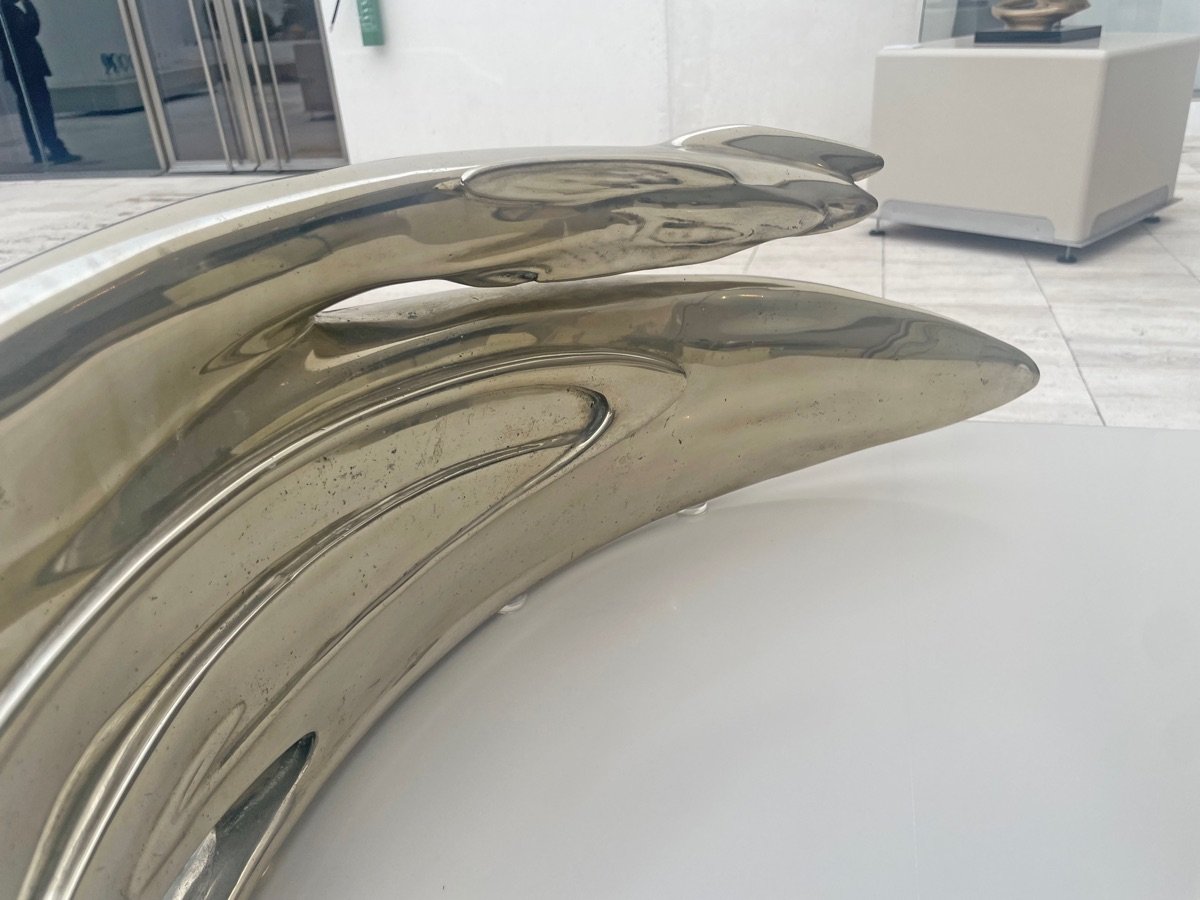
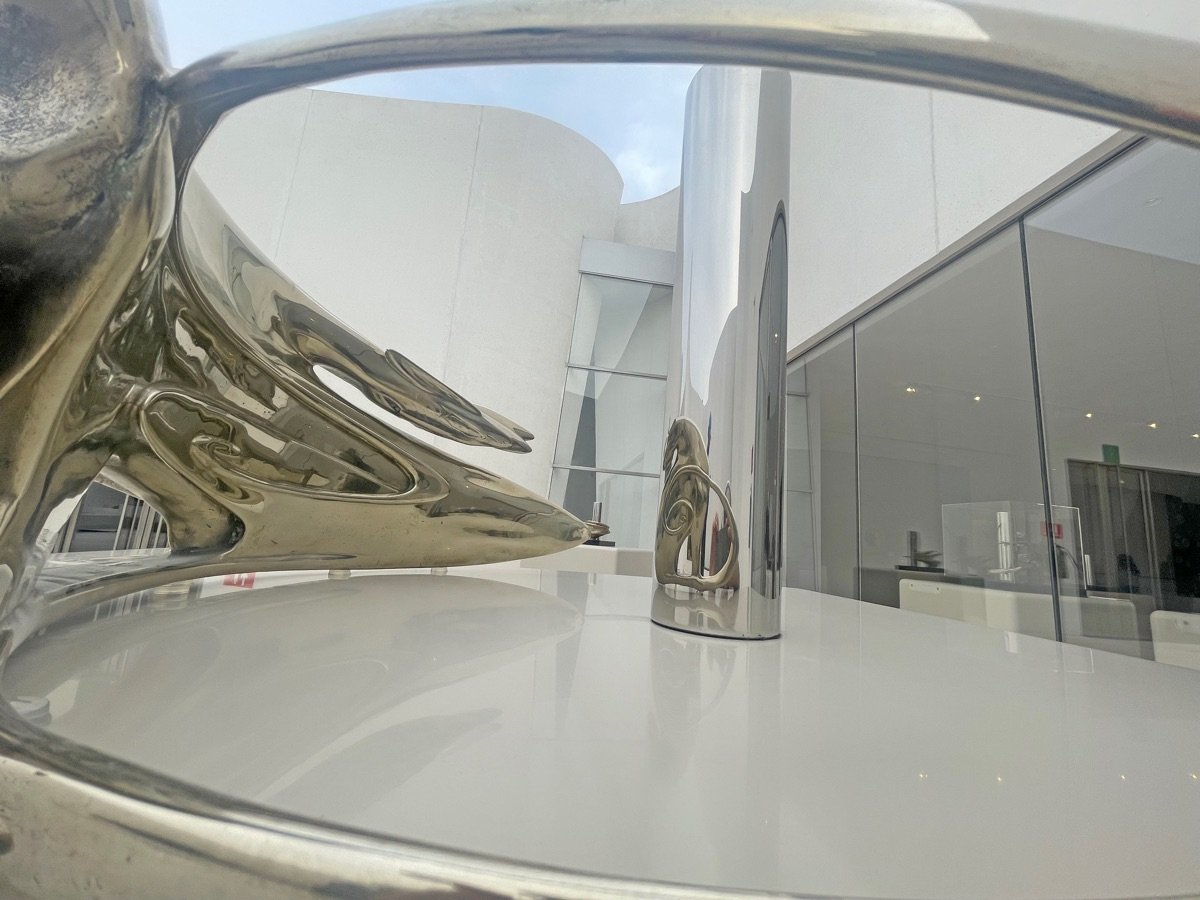
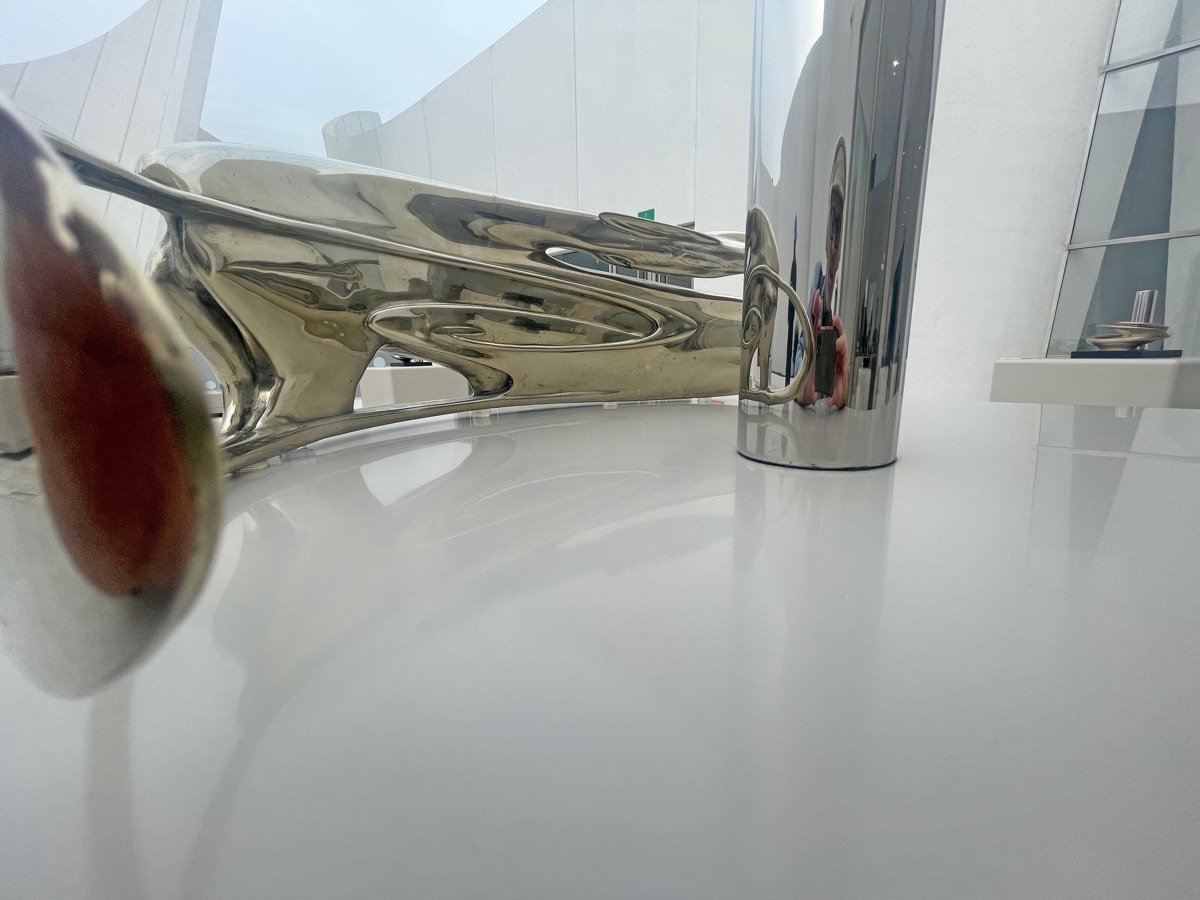
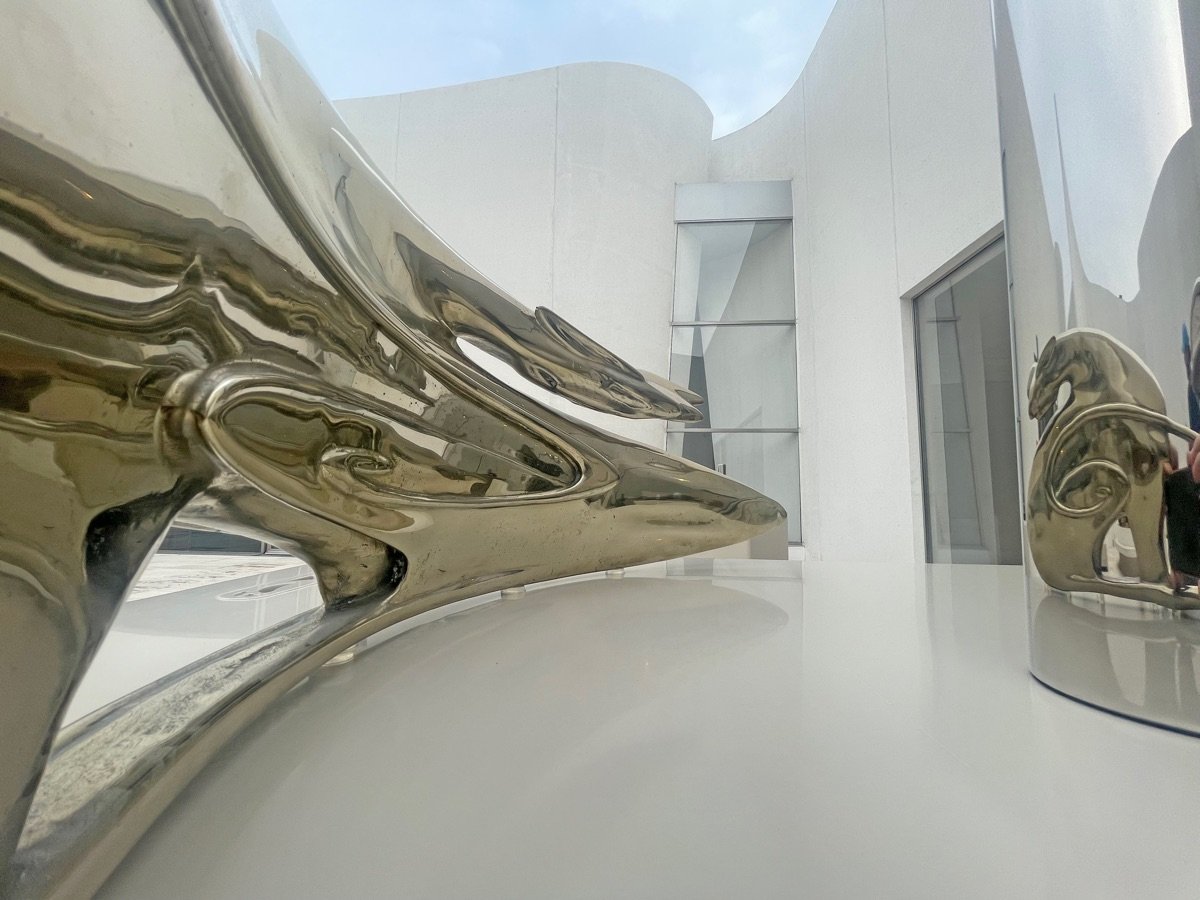

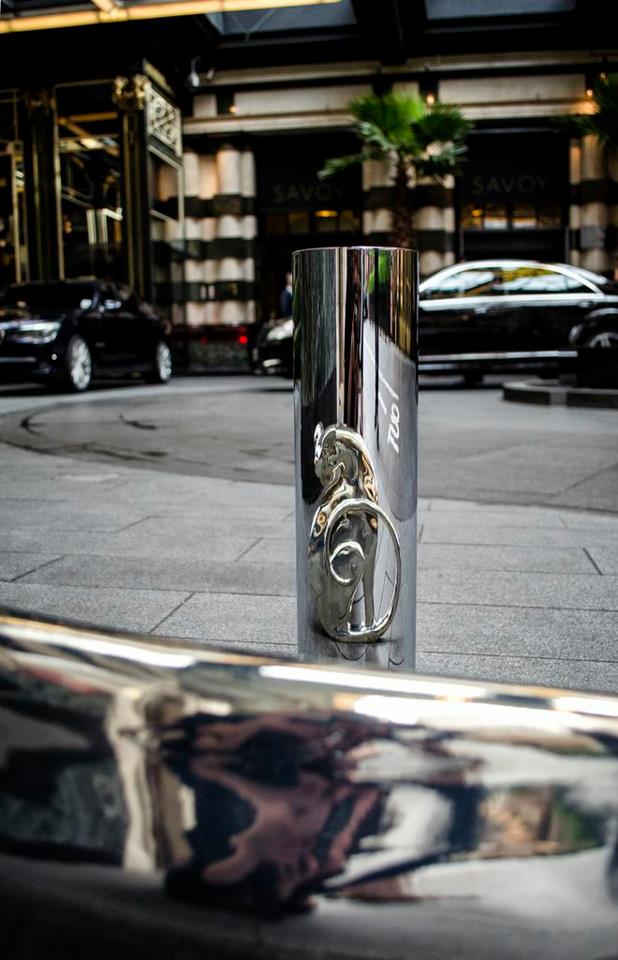
This is what I learned:
We believe in superstition as an irrational response to our lack of understanding of how the universe works.
Superstition handles the element of our lives that we can't understand. Superstition gives us the illusion of control in an unpredictable world. Superstition is a comfortable sofa for our self doubt.
So in a haze of artistic angst I turned to the greatest irrationality of them all .... I turned to the mathematical constant Pi.
Just incase any of you are wondering what the mathematical description of irrational is: it means that there are a never ending number of decimal places. It turns out for example that it is completely impossible to cut a cottage pie into 3 perfectly equal slices.
If you look carefully at this sculpture you'll see that it is distorted out in a circle. The essence all circles in nature is Pi. What better way to represent the ephemeral notion of superstition than with the magic number itself.
I have no doubt that many of you glazed over at school when your maths teacher tried to explain Pi to you. Here I deliver you a tangible way of understanding it visually, and through this work I hope to share with you my understanding of the nature of superstition and why Kaspar the 14th guest is important at the Savoy.
You've all heard the story of Kaspar and this sculpture presents a paradox.
One the one hand this sculpture has been crafted by some of the most advanced technologies known to humankind. 3D printing, spacial scanning, massive processing power, 3D graphics, advanced chemistry and complex mathematics. It is a sculpture created both by hand and by super science. I mean this literally.
And yet, science by its very nature is an antidote to superstition.
As a mathematical artist, when I got this commission, I was left trying to represent the concept of magic (superstition) with the very tools that undermine it. I turned to google and hunted for academic papers on superstition, finally coming across an academic called Stuart A. Vyse, University of Coniticut.












